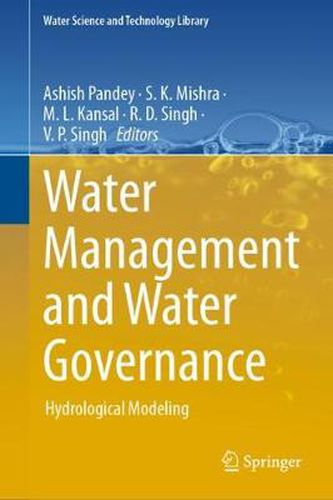Readings Newsletter
Become a Readings Member to make your shopping experience even easier.
Sign in or sign up for free!
You’re not far away from qualifying for FREE standard shipping within Australia
You’ve qualified for FREE standard shipping within Australia
The cart is loading…






This title is printed to order. This book may have been self-published. If so, we cannot guarantee the quality of the content. In the main most books will have gone through the editing process however some may not. We therefore suggest that you be aware of this before ordering this book. If in doubt check either the author or publisher’s details as we are unable to accept any returns unless they are faulty. Please contact us if you have any questions.
This book focusses on hydrological modeling, water management, and water governance. It covers the applications of remote sensing and GIS tools and techniques for land use and land cover classifications, estimation of precipitation, evaluation of morphological changes, and monitoring of soil moisture variability. Moreover, remote sensing and GIS techniques have been applied for crop mapping to assess cropping patterns, computation of reference crop evapotranspiration, and crop coefficient. Hydrological modeling studies have been carried out to address various issues in the water sector. MODFLOW model was successfully applied for groundwater modeling and groundwater recharge estimation. Runoff modeling has been carried out to simulate the snowmelt runoff together with the rainfall and sub-surface flow contributions for snow-fed basins. A study has been included, which predicts the impact of the land use and land cover on stream flow. Various problems in the water sector have been addressed employing hydrological models such as SWAT, ArcSWAT, and VIC. An experimental study has been presented wherein the laboratory performance of rainfall simulator has been evaluated. Hydrological modeling studies involving modifications in the curve number methodology for simulation of floods and sediment load have also been presented.
This book is useful for academicians, water practitioners, scientists, water managers, environmentalists, and administrators, NGOs, researchers, and students who are involved in water management with the focus on hydrological modeling, water management, and water governance.
$9.00 standard shipping within Australia
FREE standard shipping within Australia for orders over $100.00
Express & International shipping calculated at checkout
This title is printed to order. This book may have been self-published. If so, we cannot guarantee the quality of the content. In the main most books will have gone through the editing process however some may not. We therefore suggest that you be aware of this before ordering this book. If in doubt check either the author or publisher’s details as we are unable to accept any returns unless they are faulty. Please contact us if you have any questions.
This book focusses on hydrological modeling, water management, and water governance. It covers the applications of remote sensing and GIS tools and techniques for land use and land cover classifications, estimation of precipitation, evaluation of morphological changes, and monitoring of soil moisture variability. Moreover, remote sensing and GIS techniques have been applied for crop mapping to assess cropping patterns, computation of reference crop evapotranspiration, and crop coefficient. Hydrological modeling studies have been carried out to address various issues in the water sector. MODFLOW model was successfully applied for groundwater modeling and groundwater recharge estimation. Runoff modeling has been carried out to simulate the snowmelt runoff together with the rainfall and sub-surface flow contributions for snow-fed basins. A study has been included, which predicts the impact of the land use and land cover on stream flow. Various problems in the water sector have been addressed employing hydrological models such as SWAT, ArcSWAT, and VIC. An experimental study has been presented wherein the laboratory performance of rainfall simulator has been evaluated. Hydrological modeling studies involving modifications in the curve number methodology for simulation of floods and sediment load have also been presented.
This book is useful for academicians, water practitioners, scientists, water managers, environmentalists, and administrators, NGOs, researchers, and students who are involved in water management with the focus on hydrological modeling, water management, and water governance.